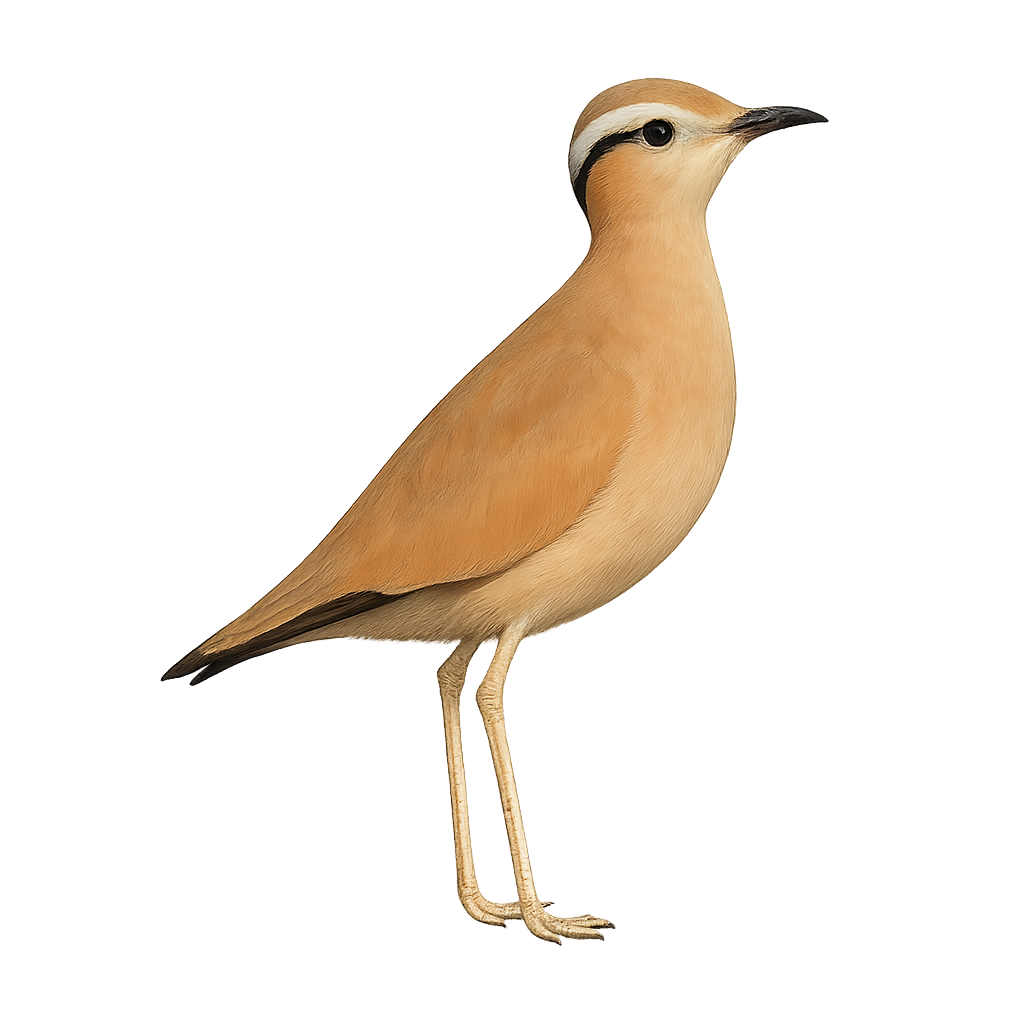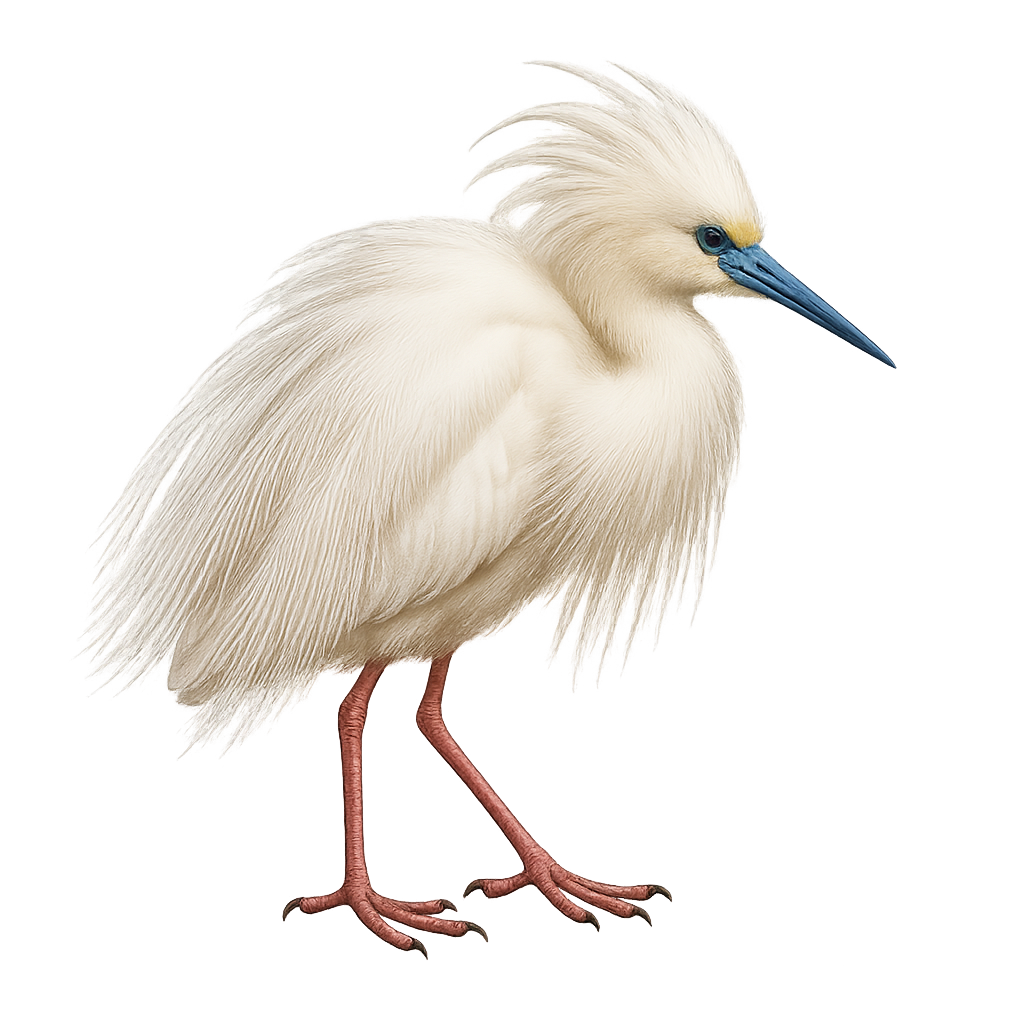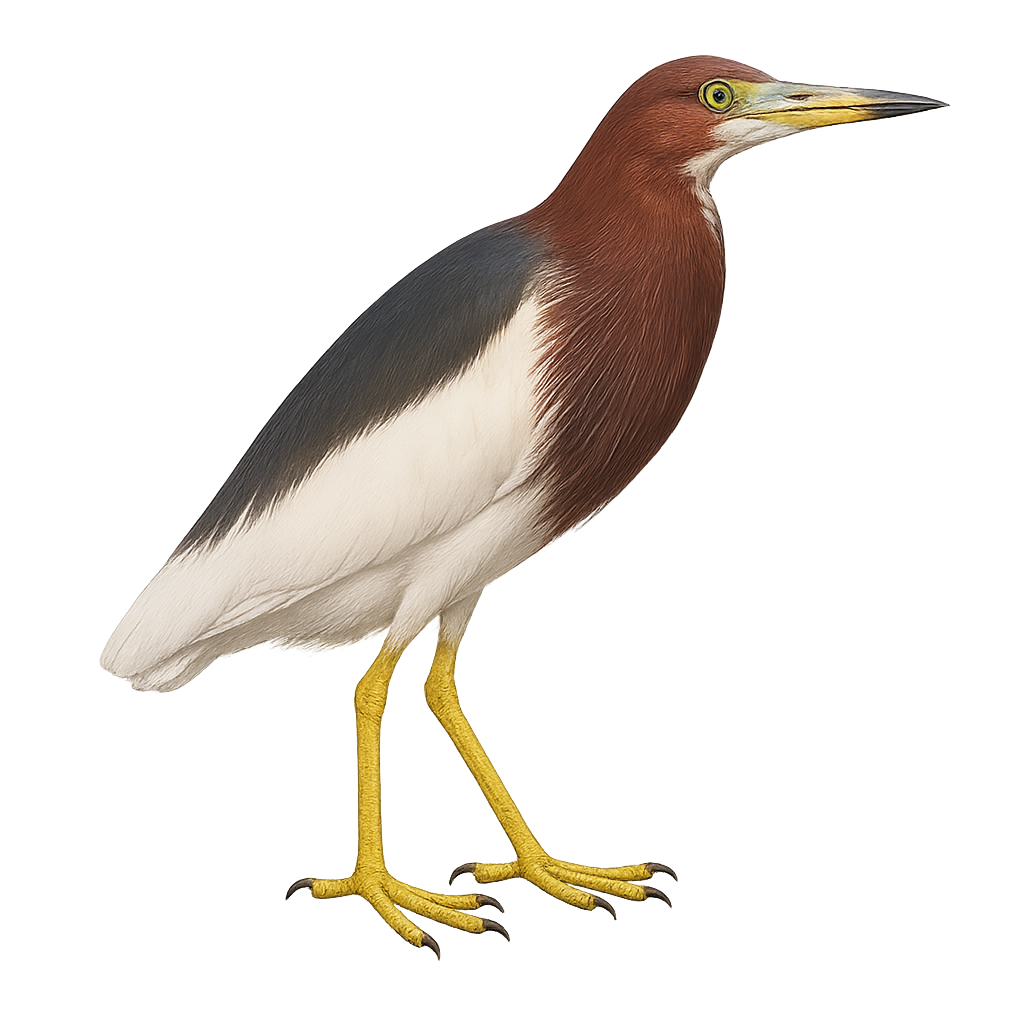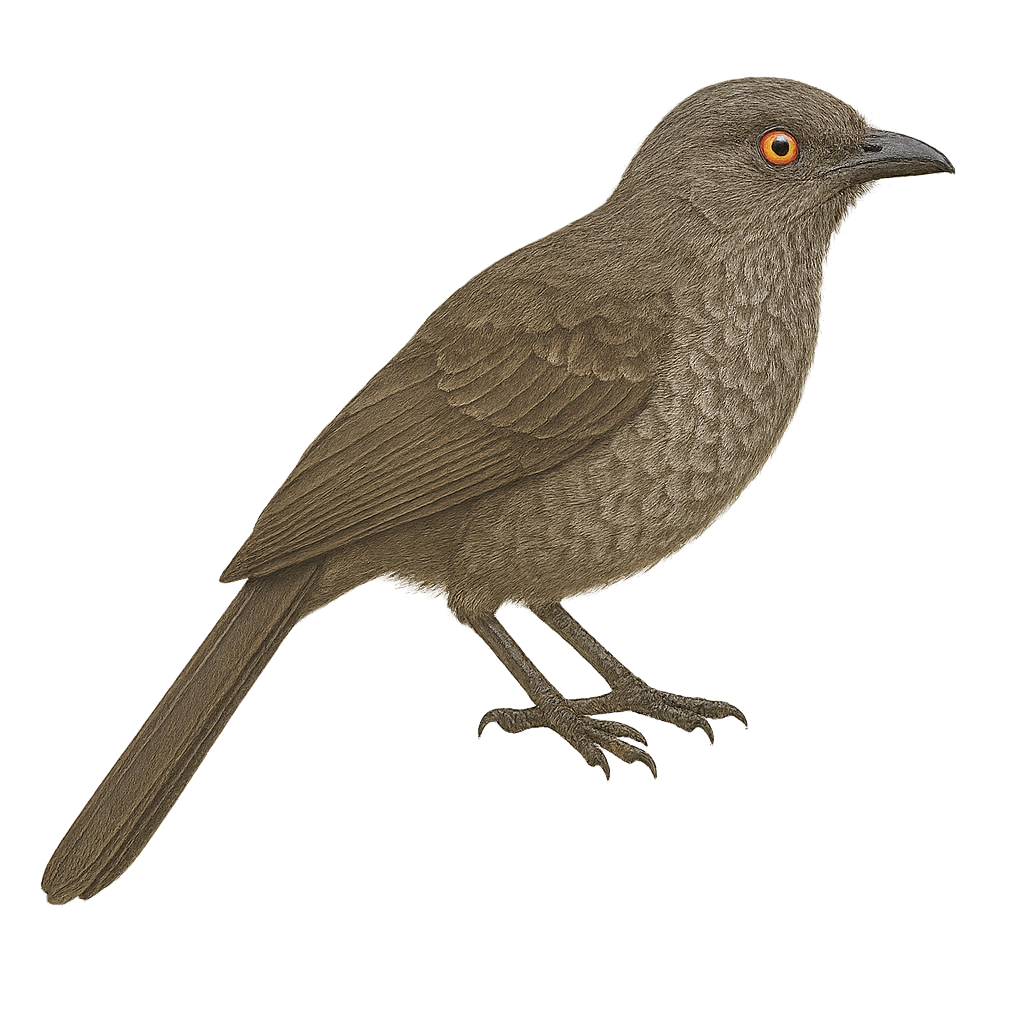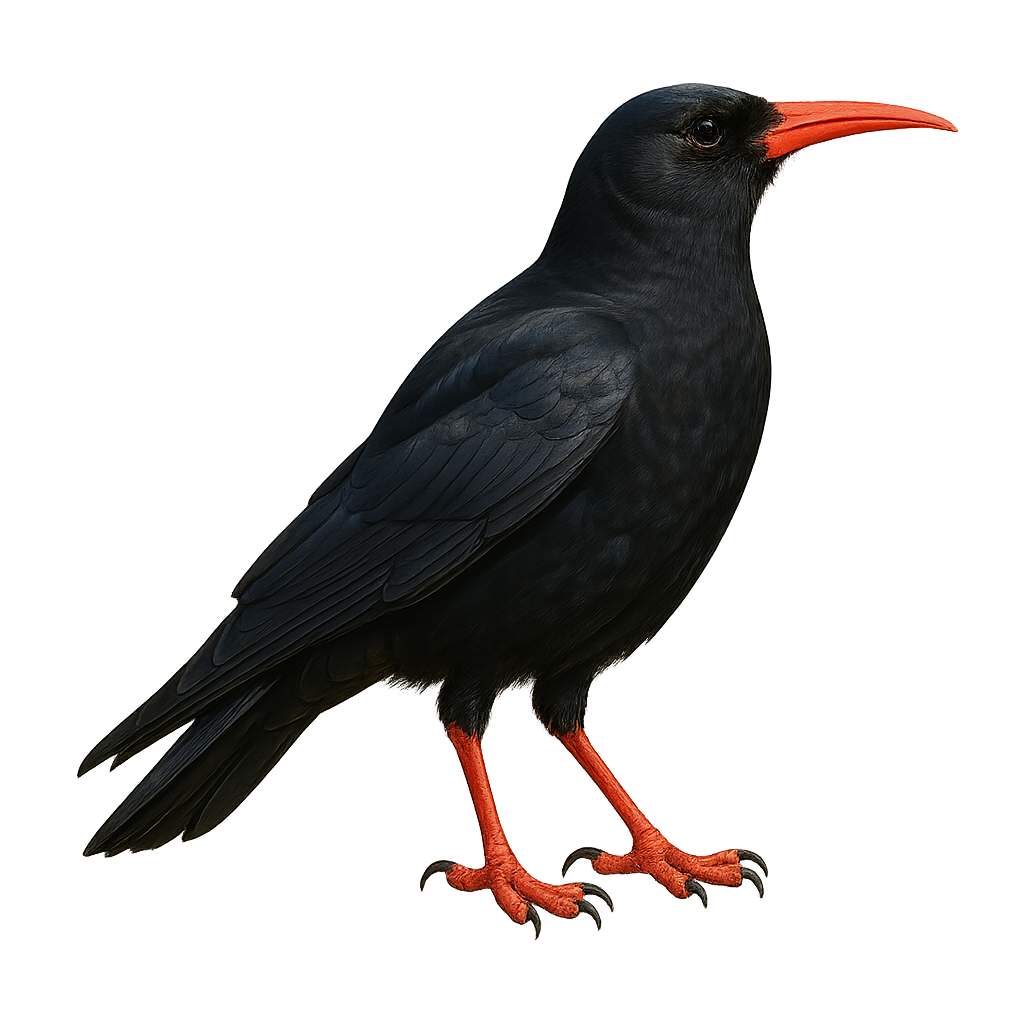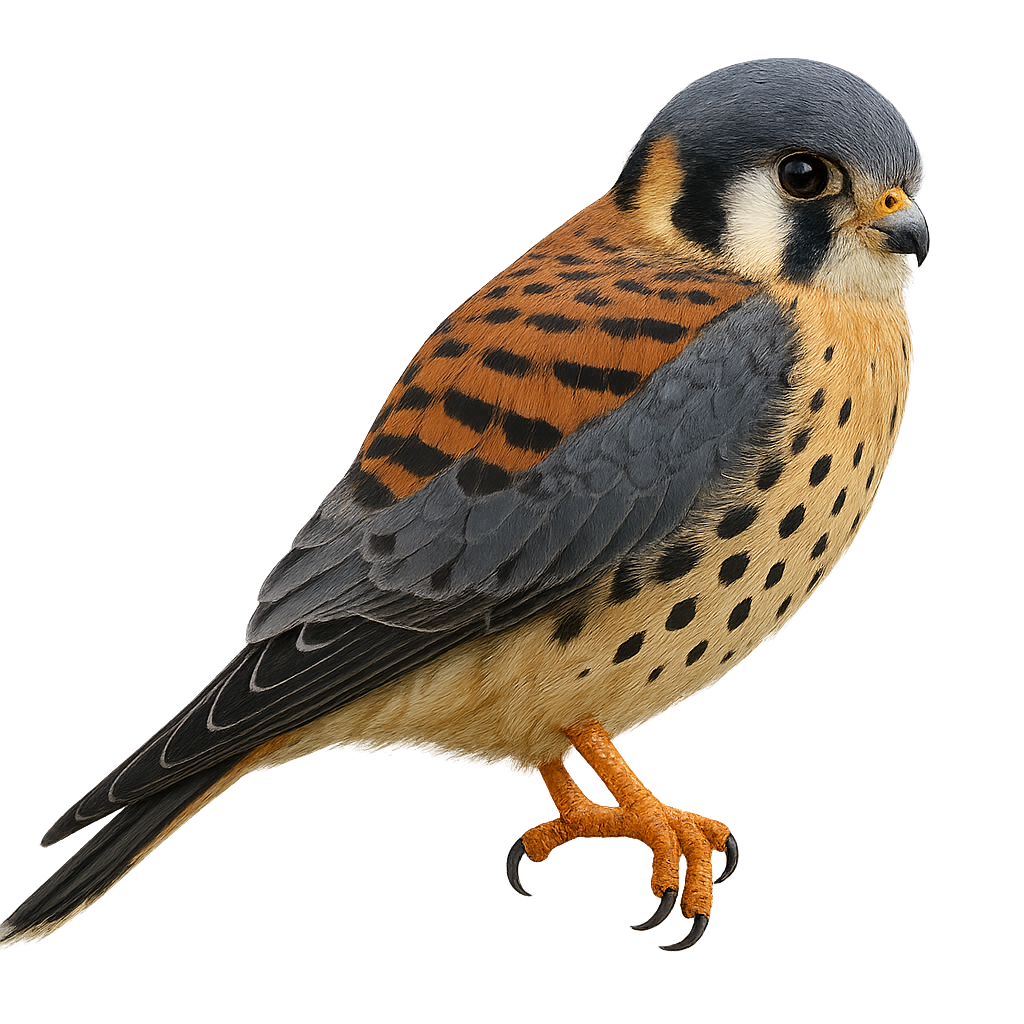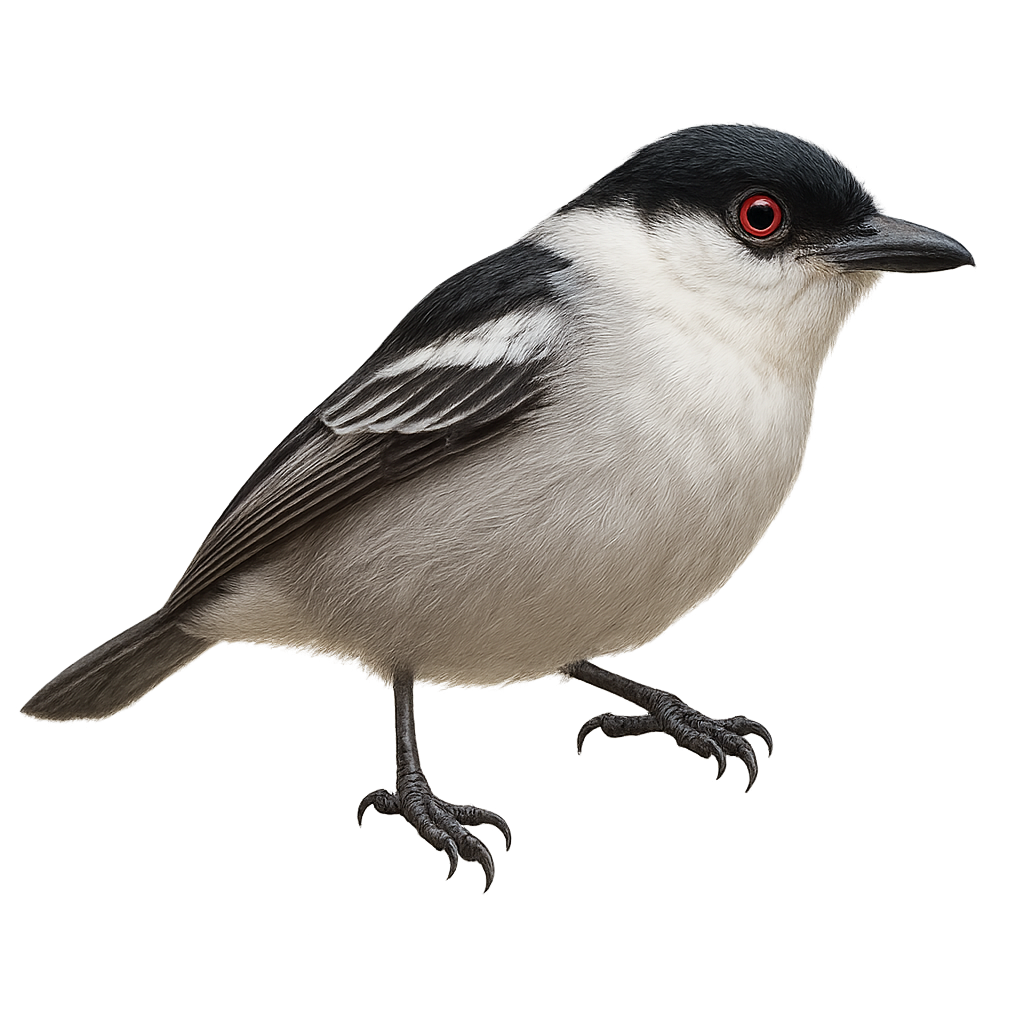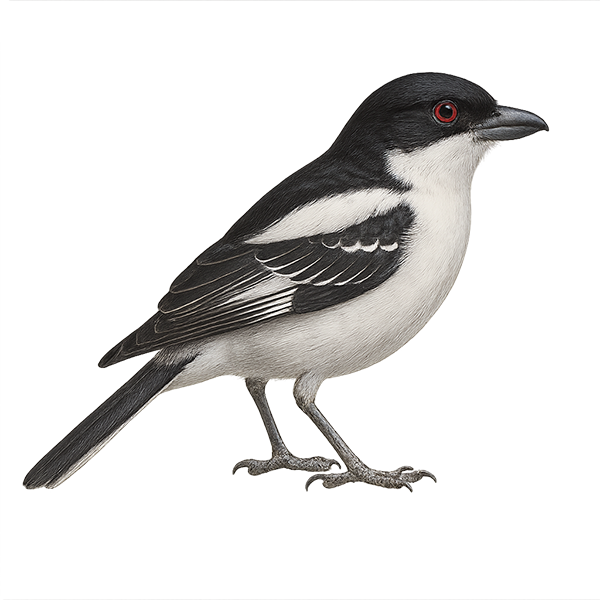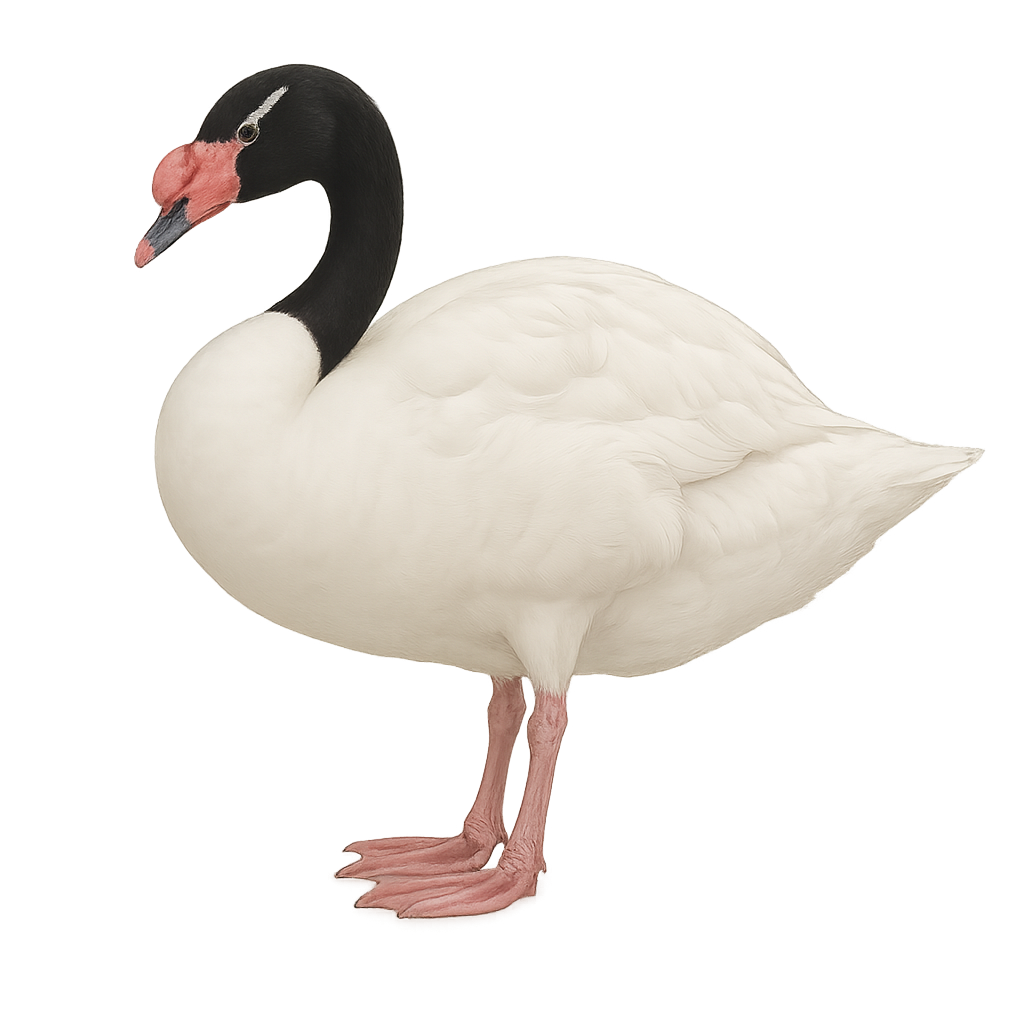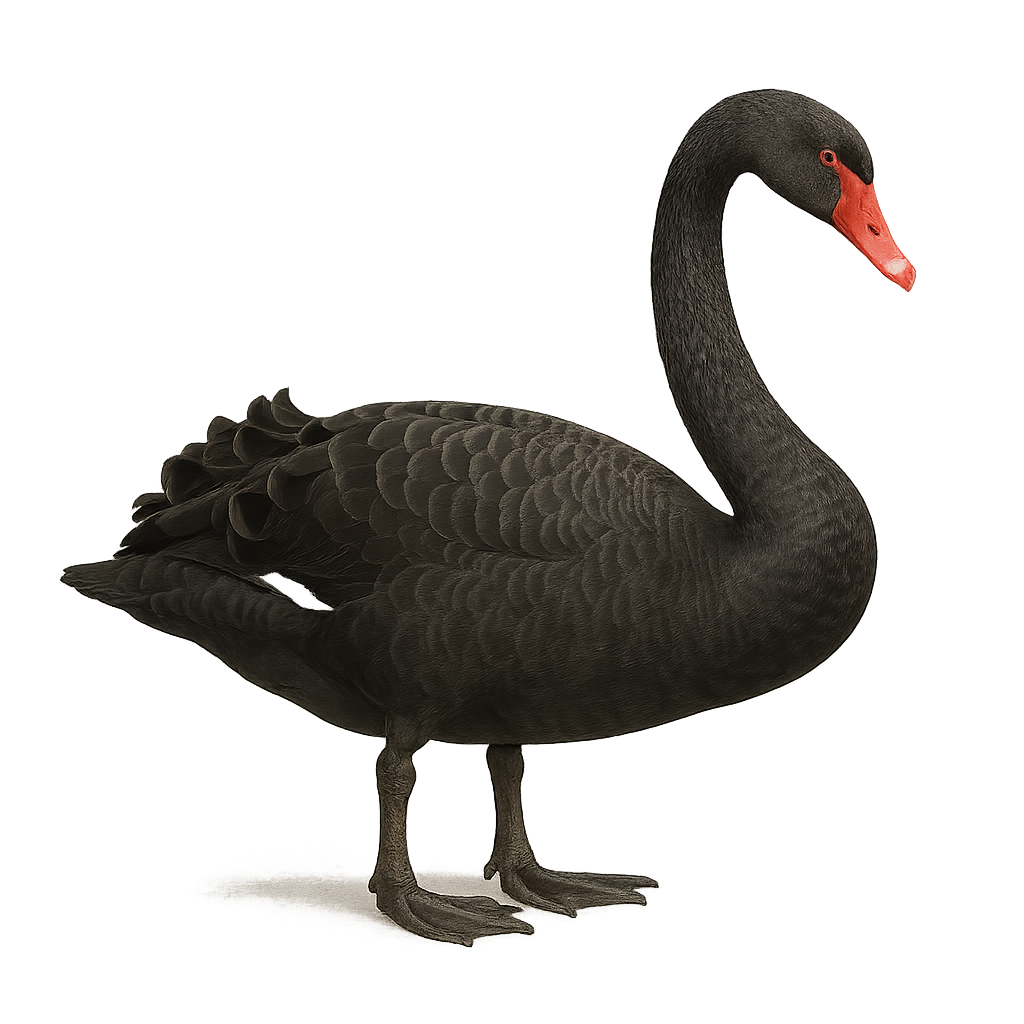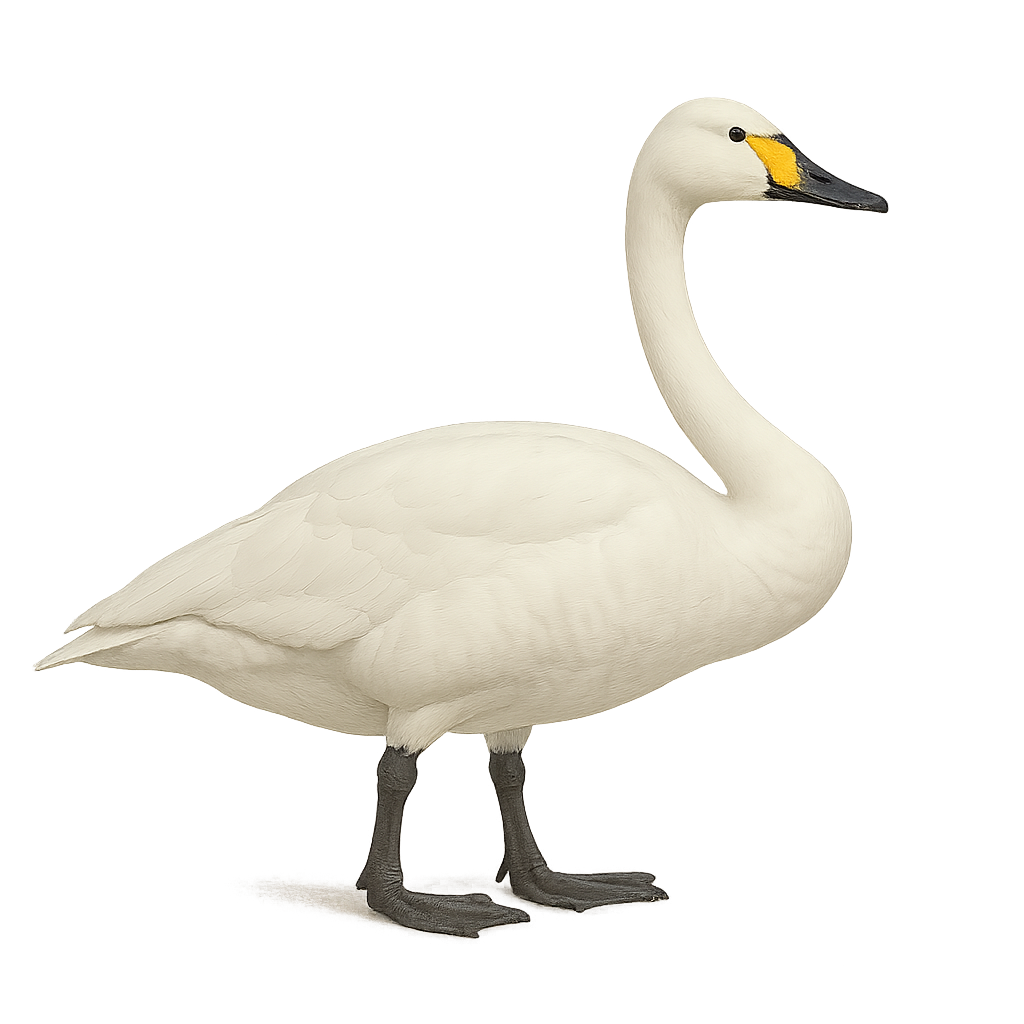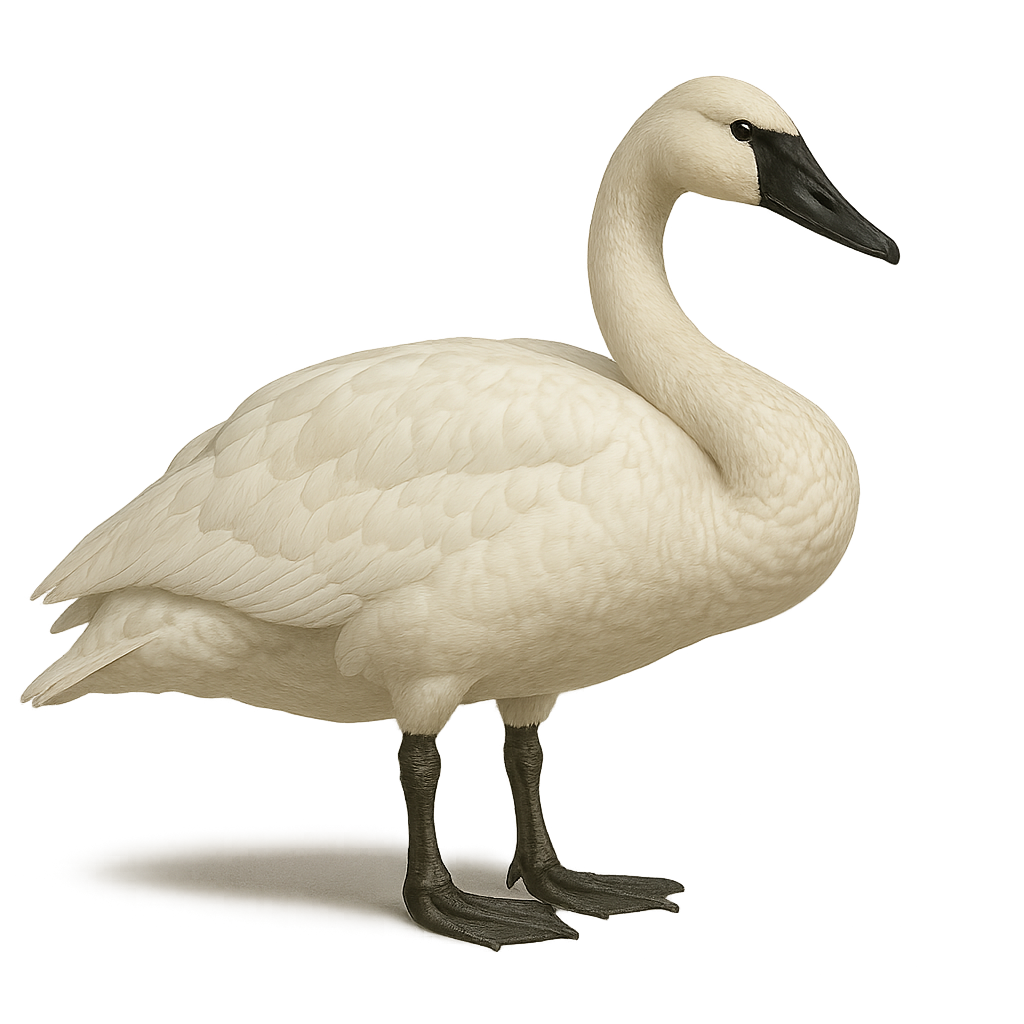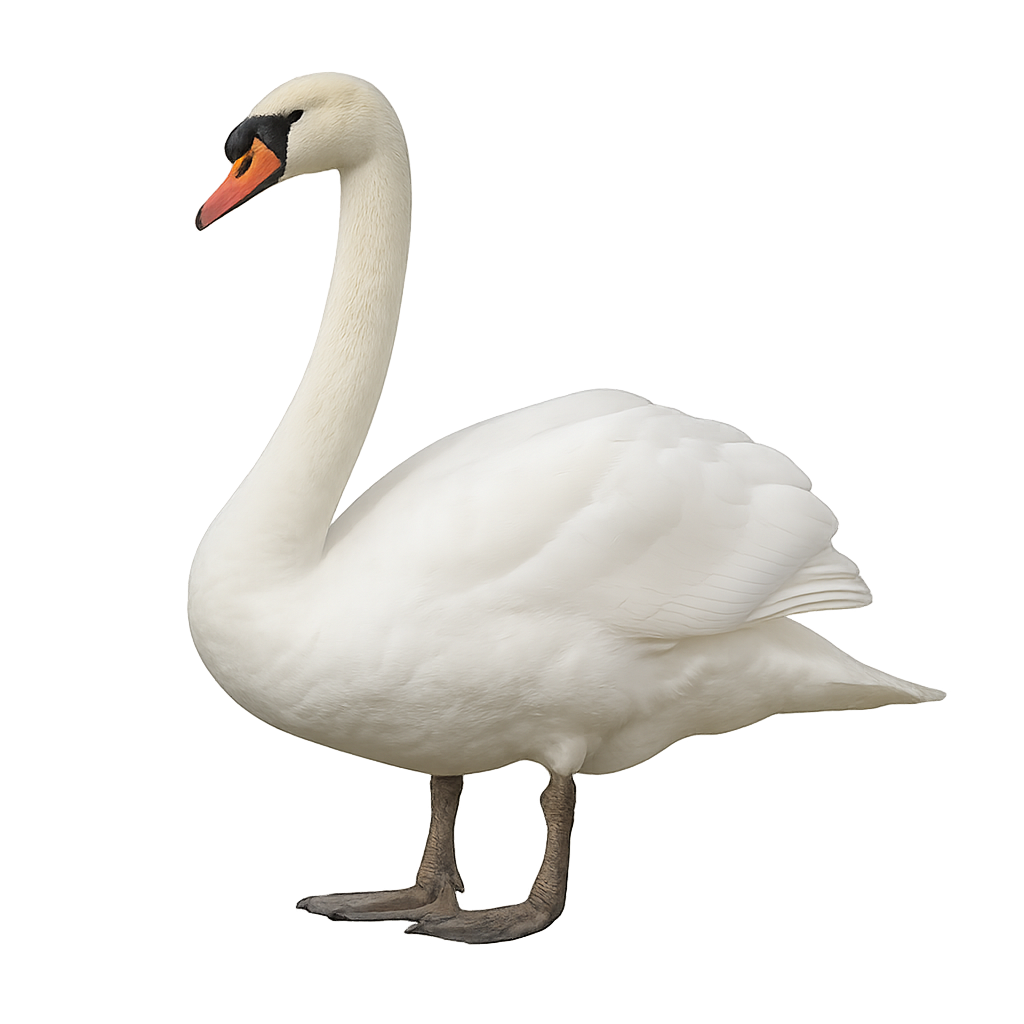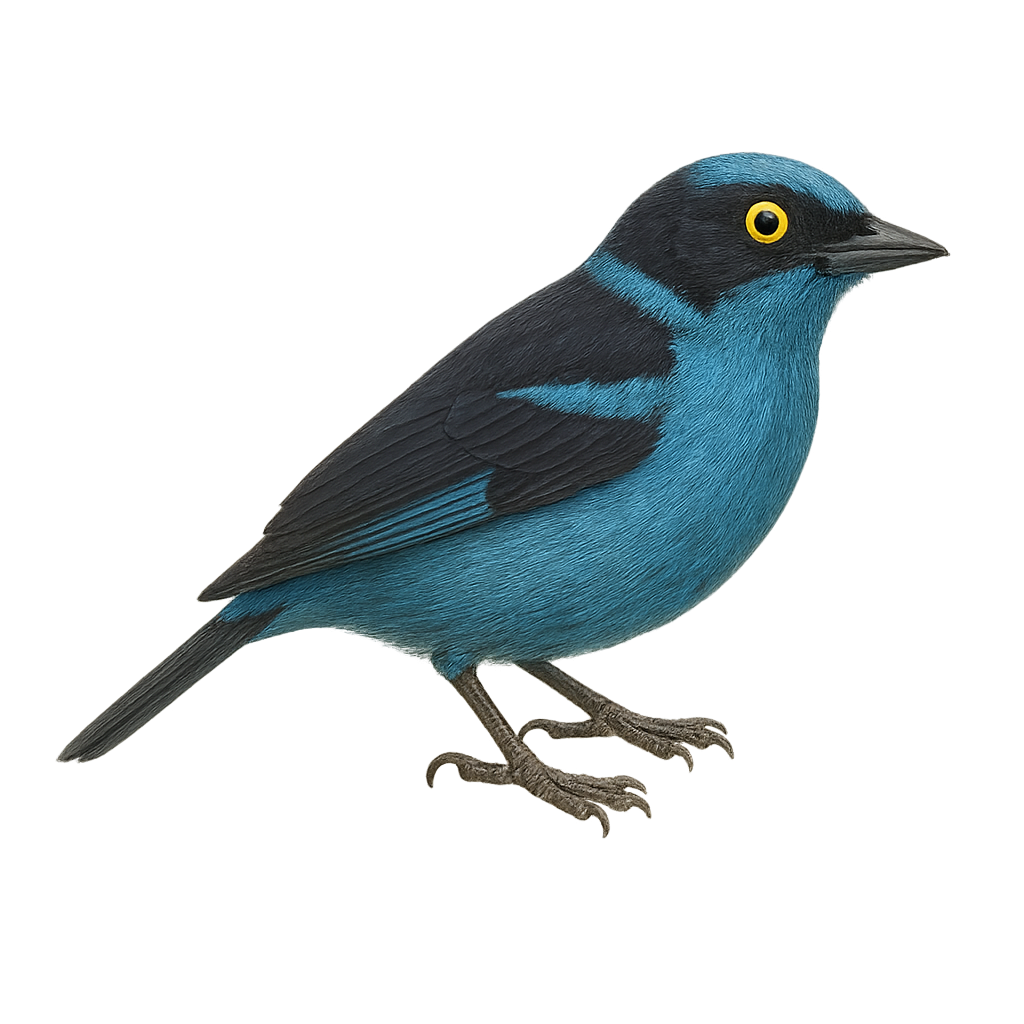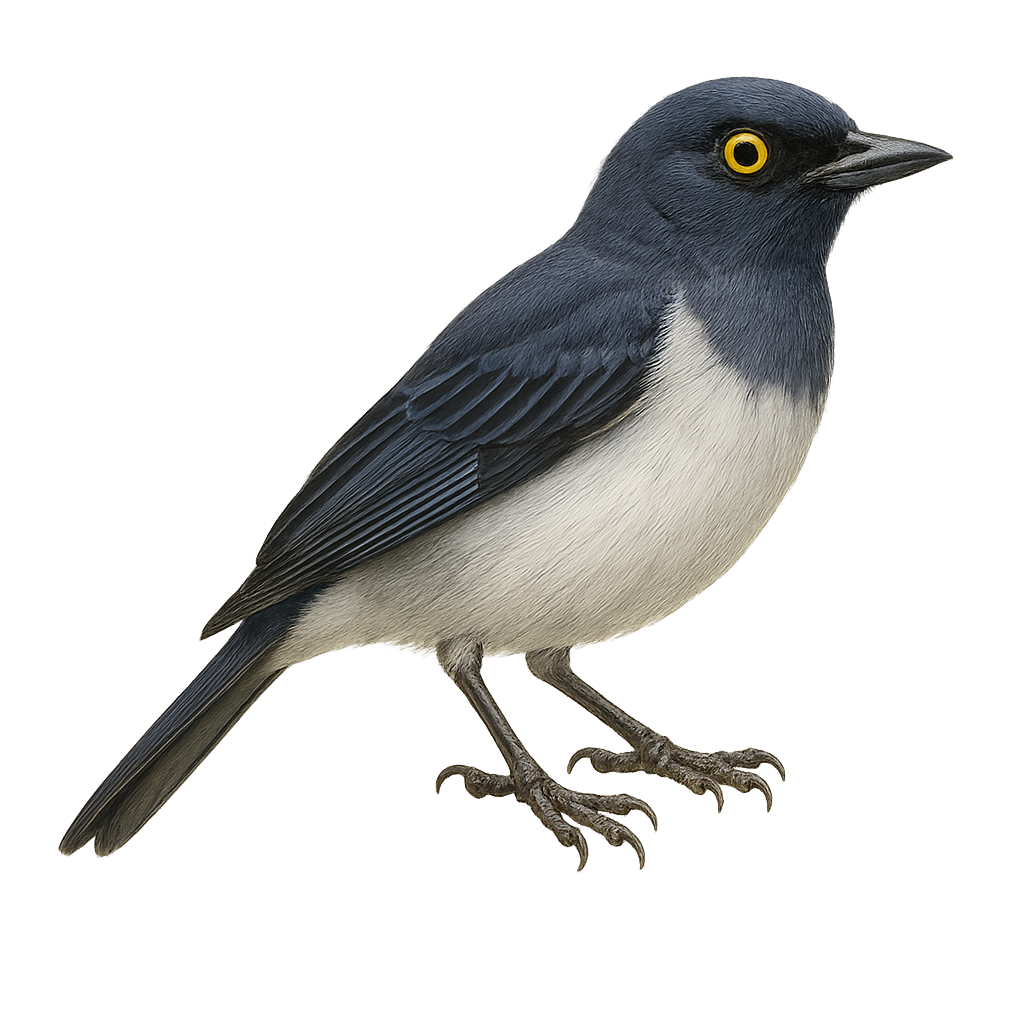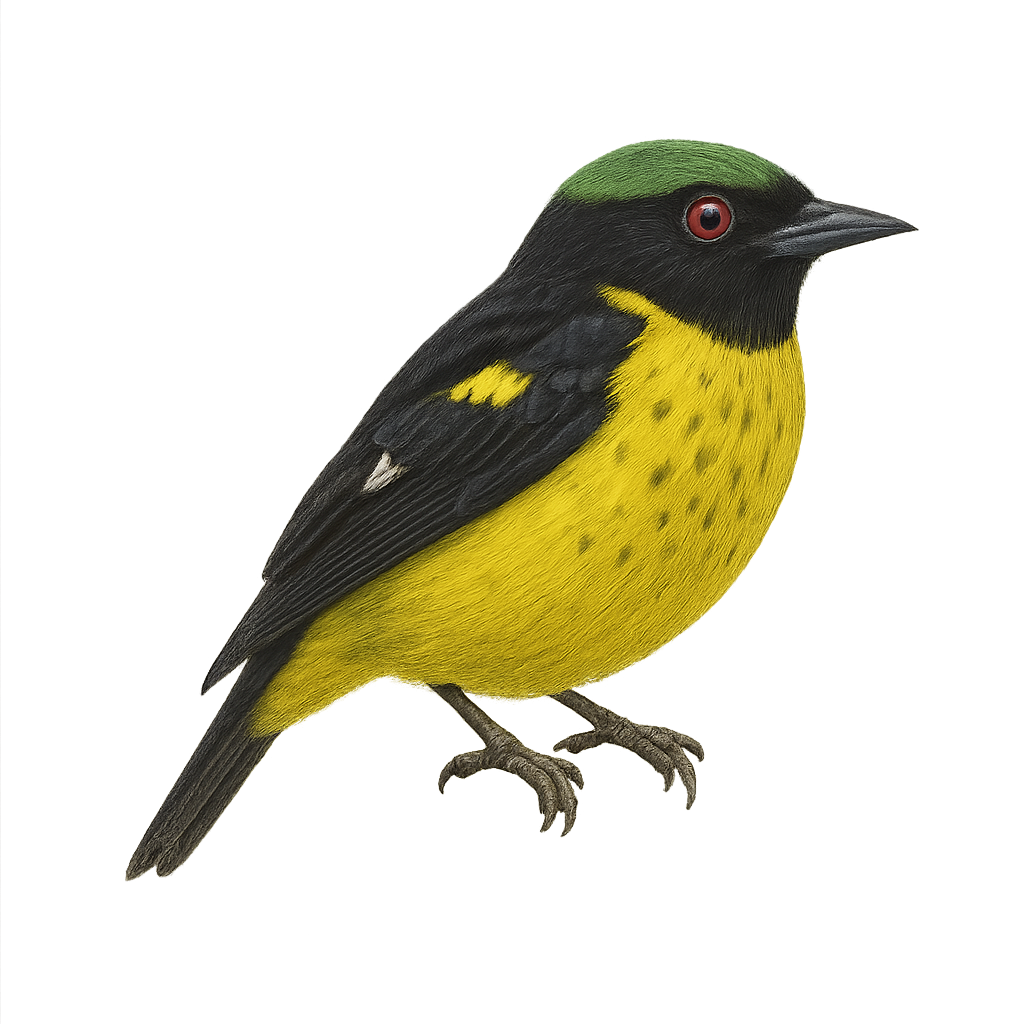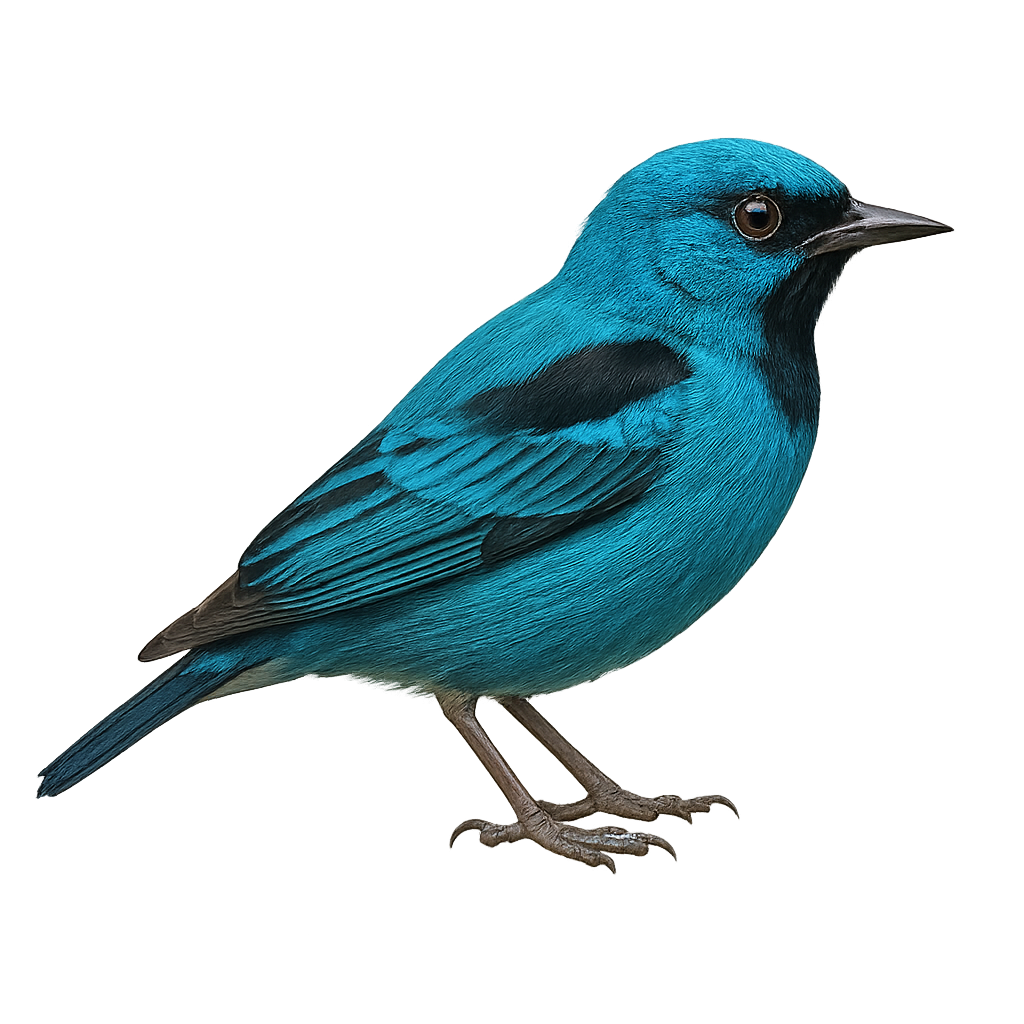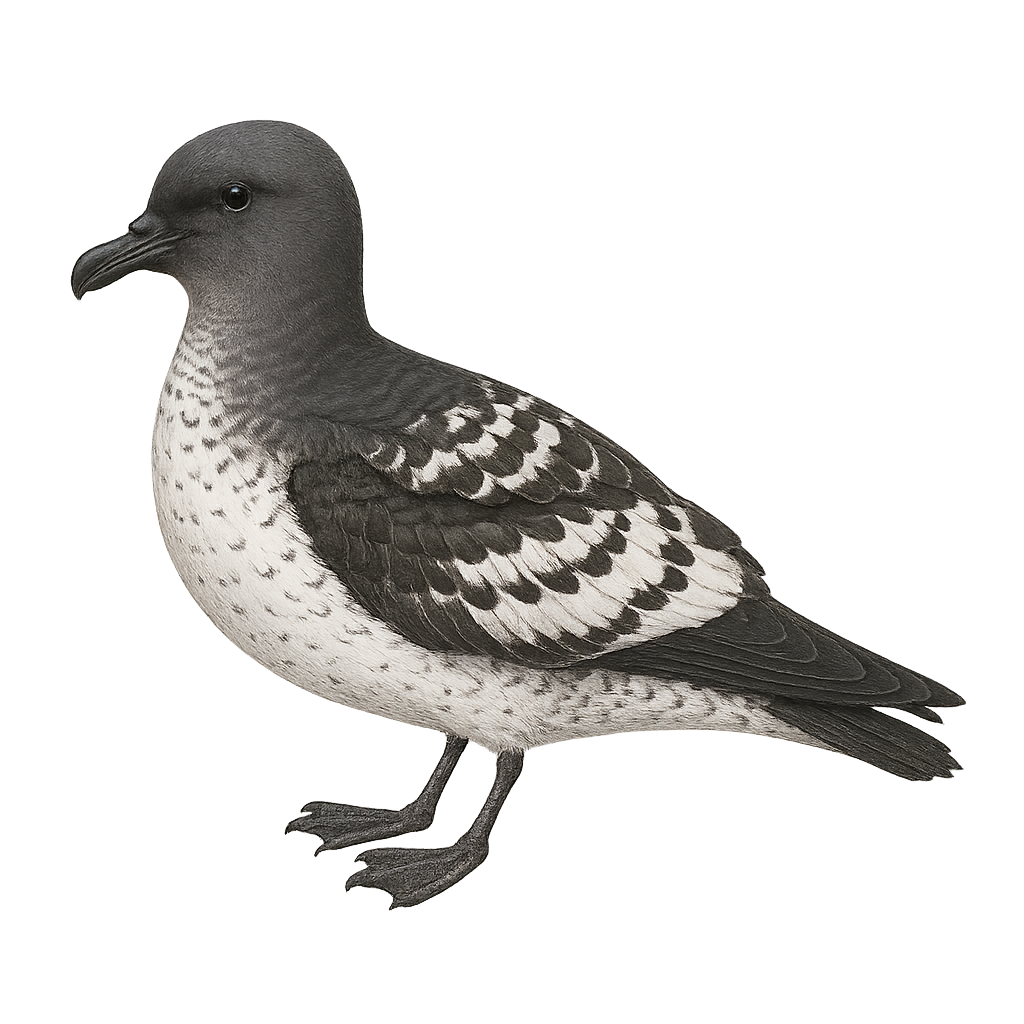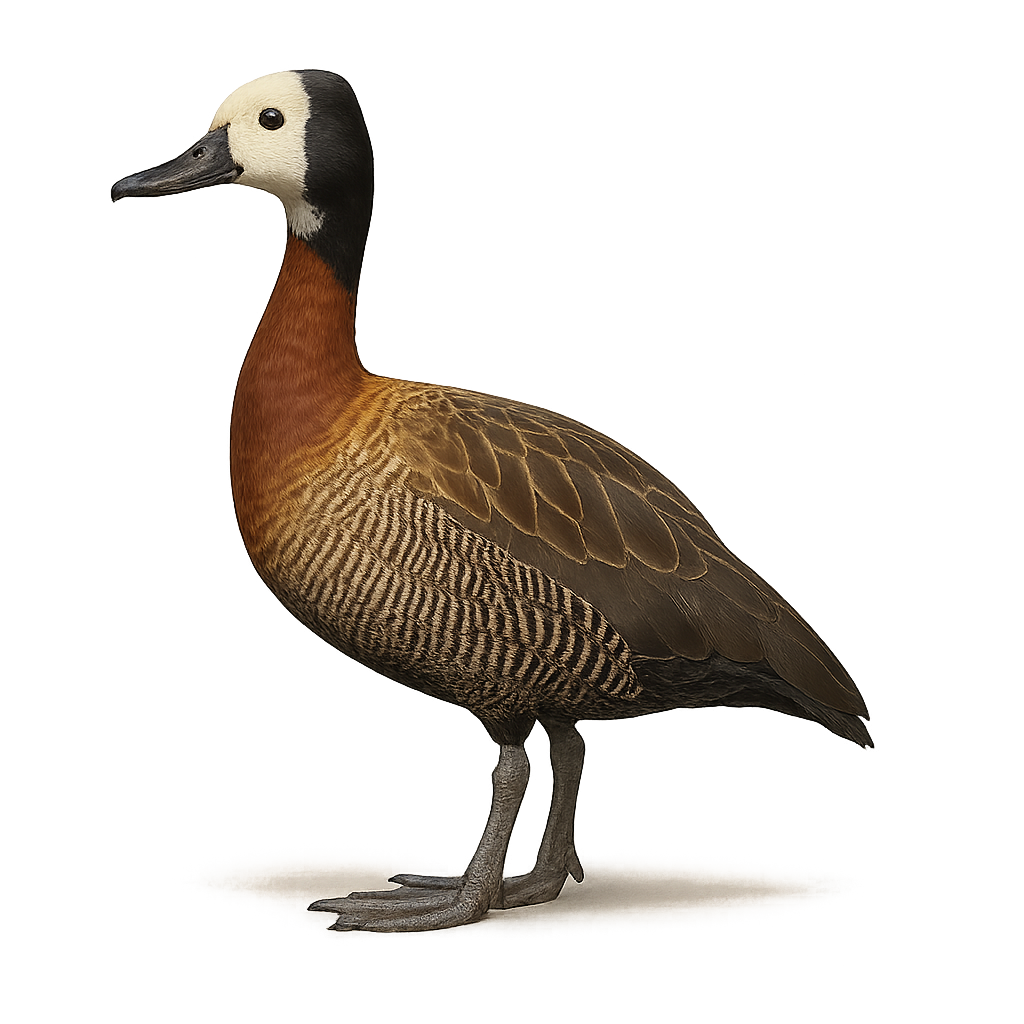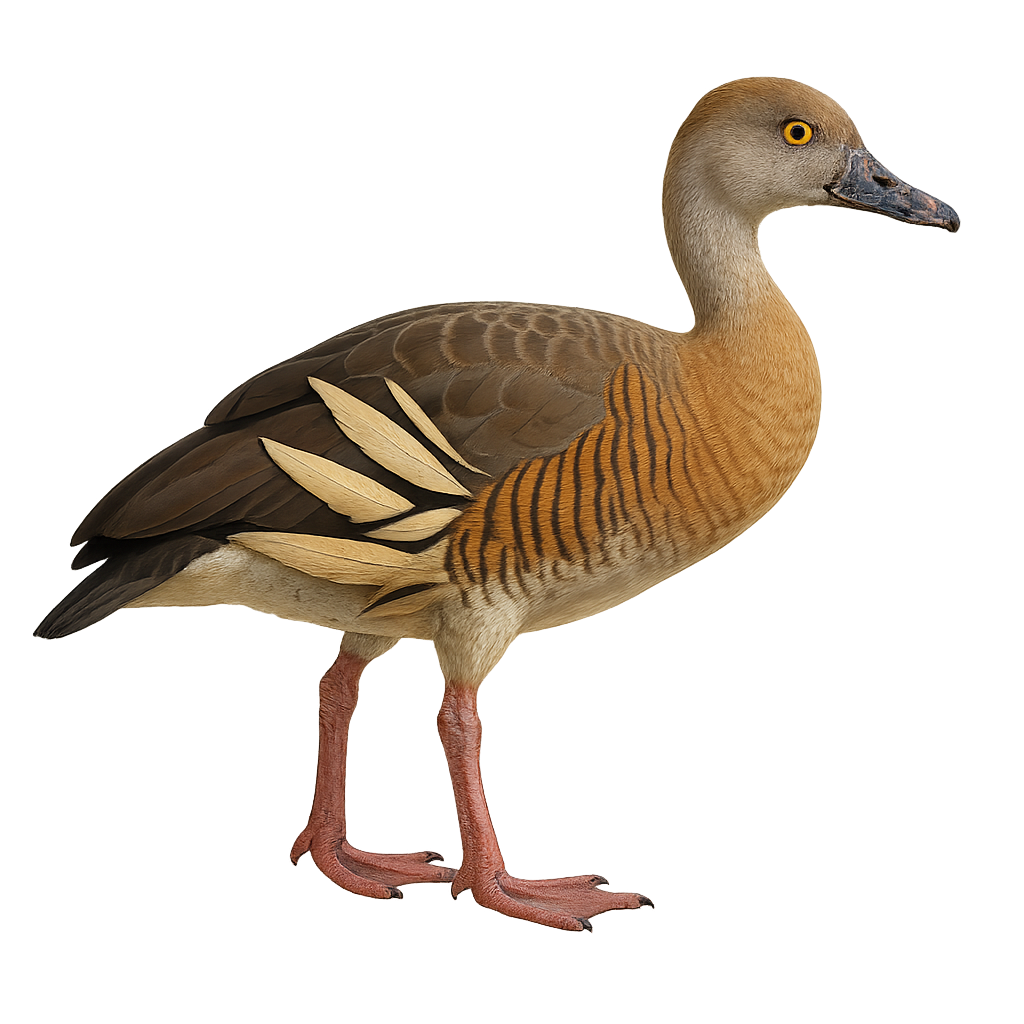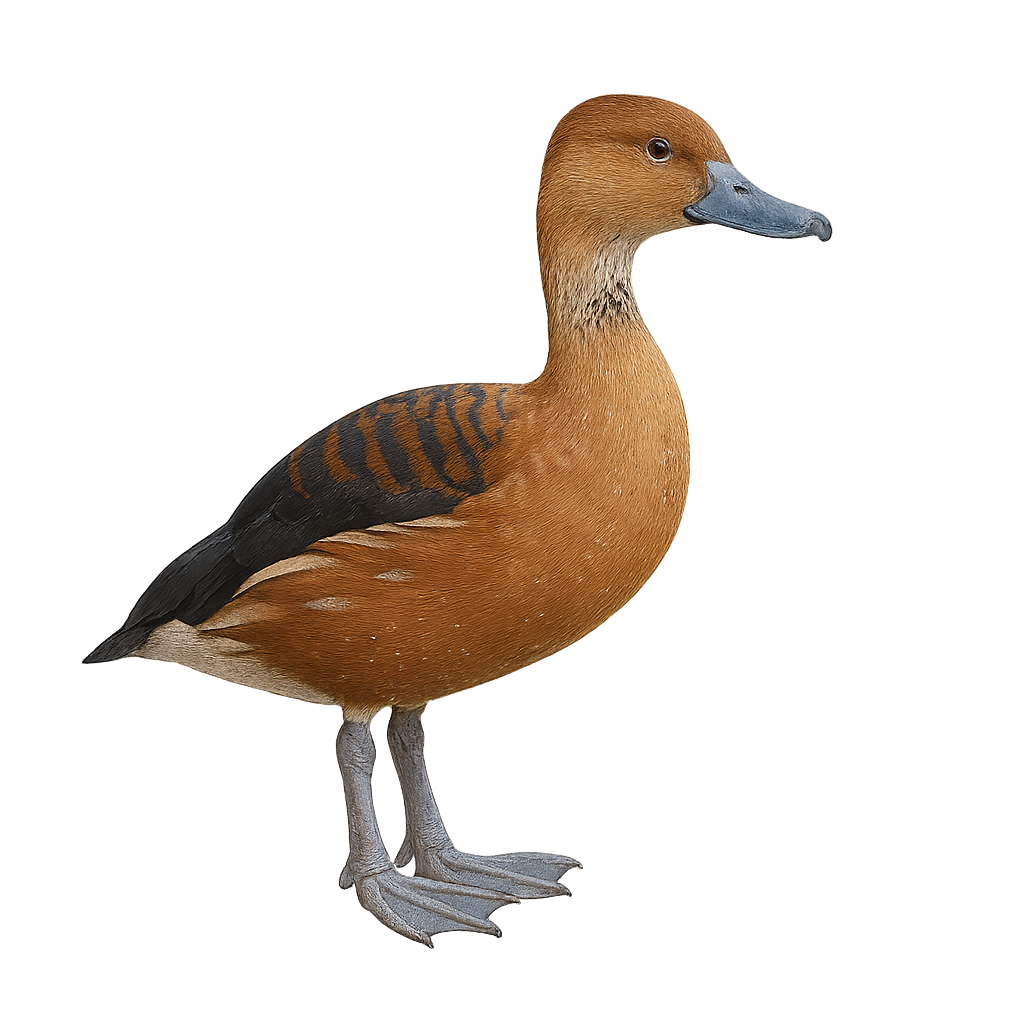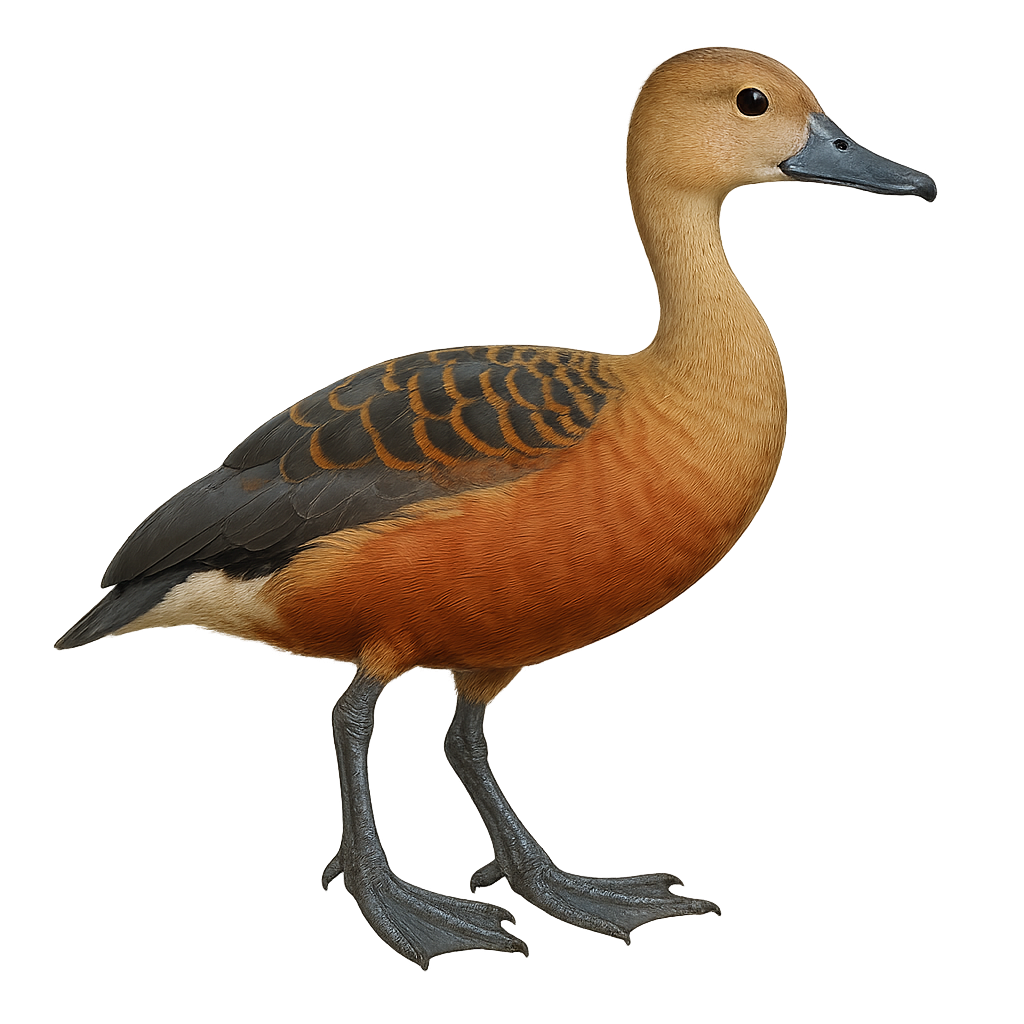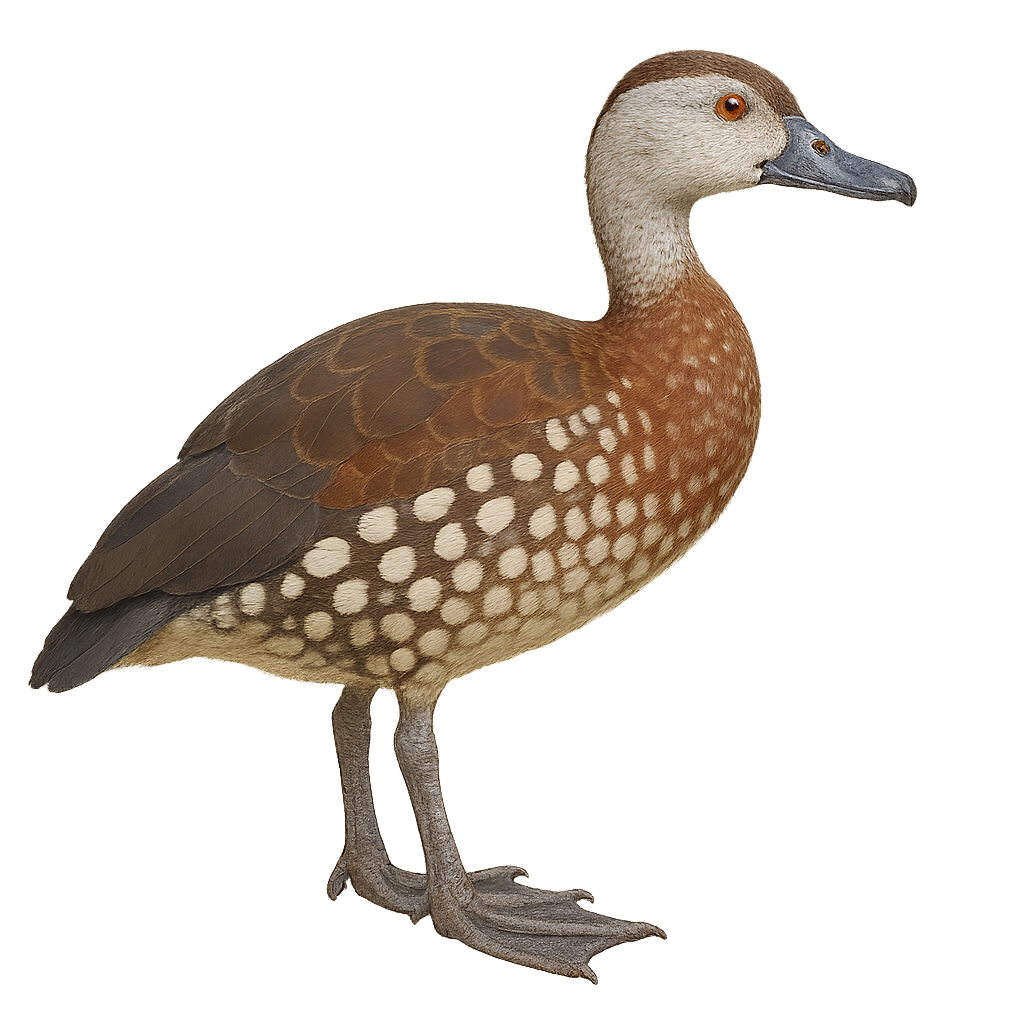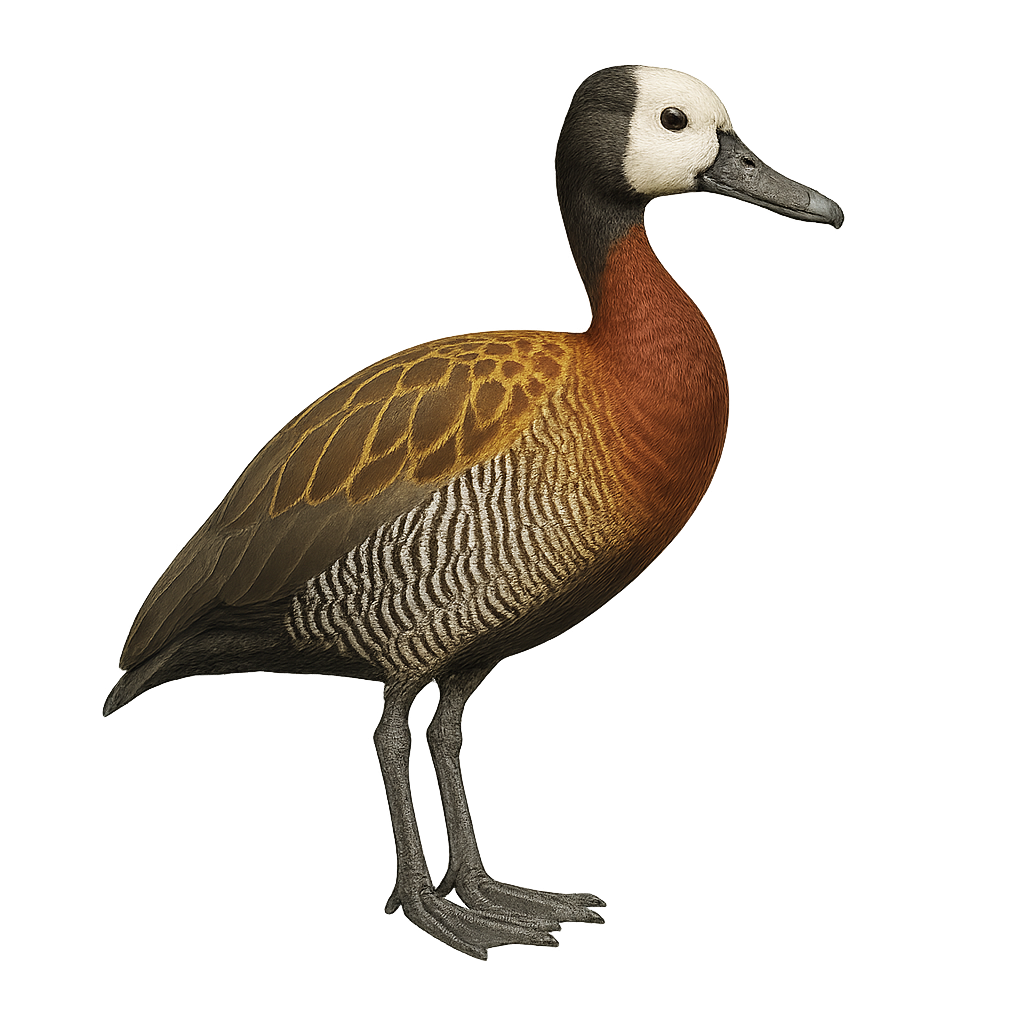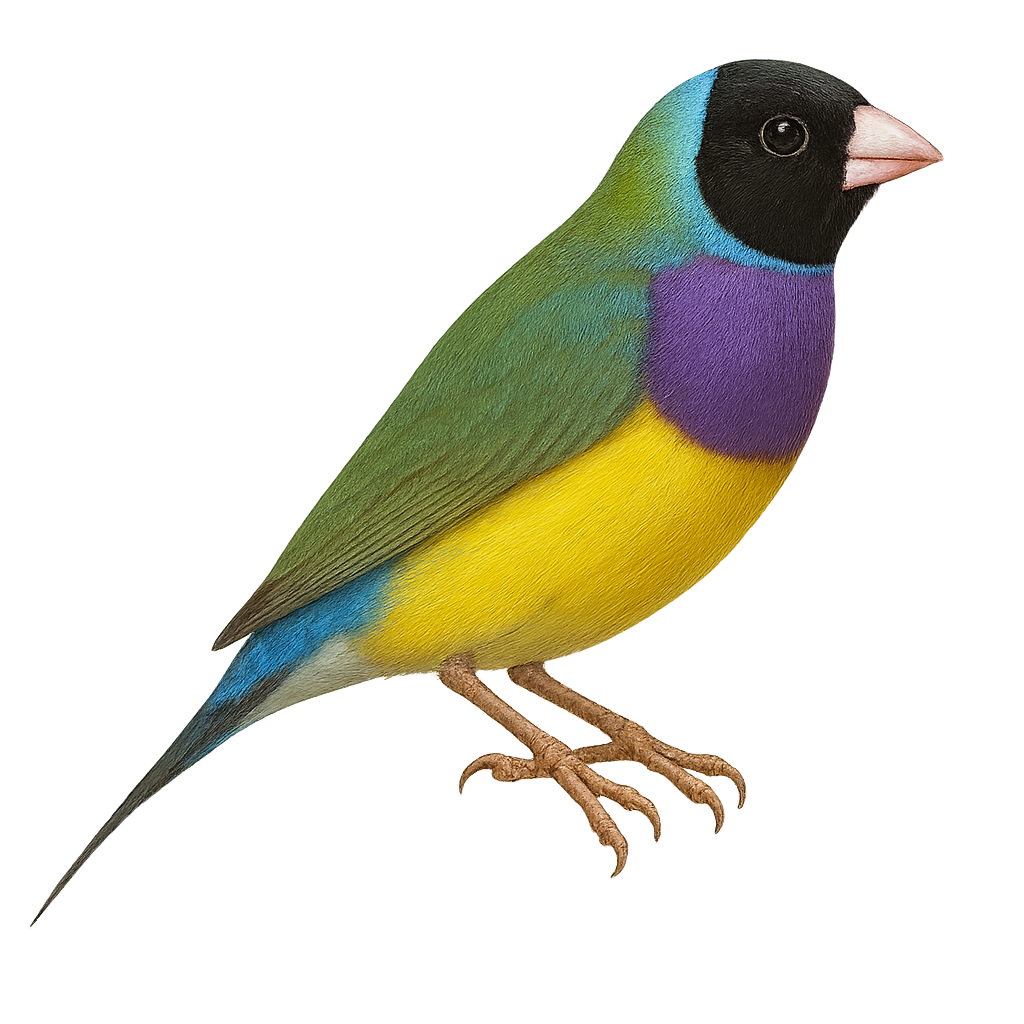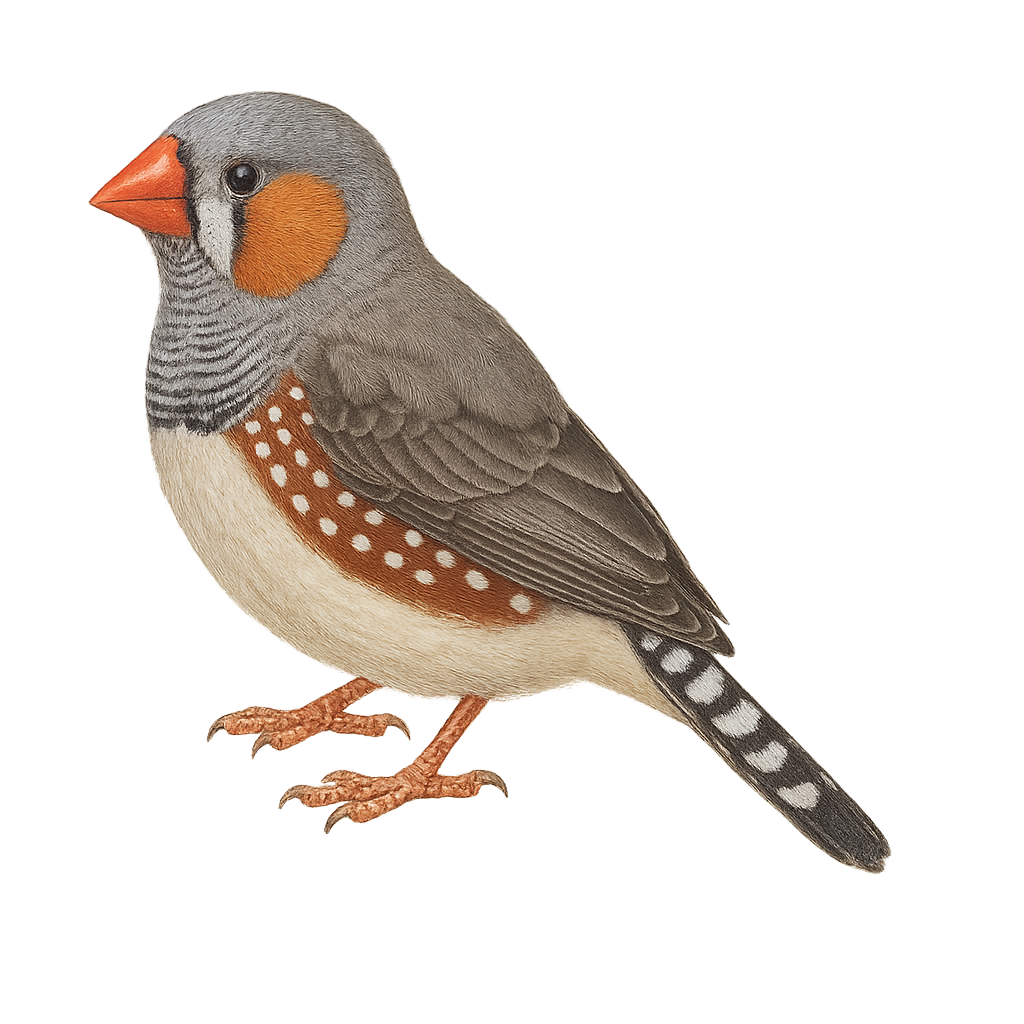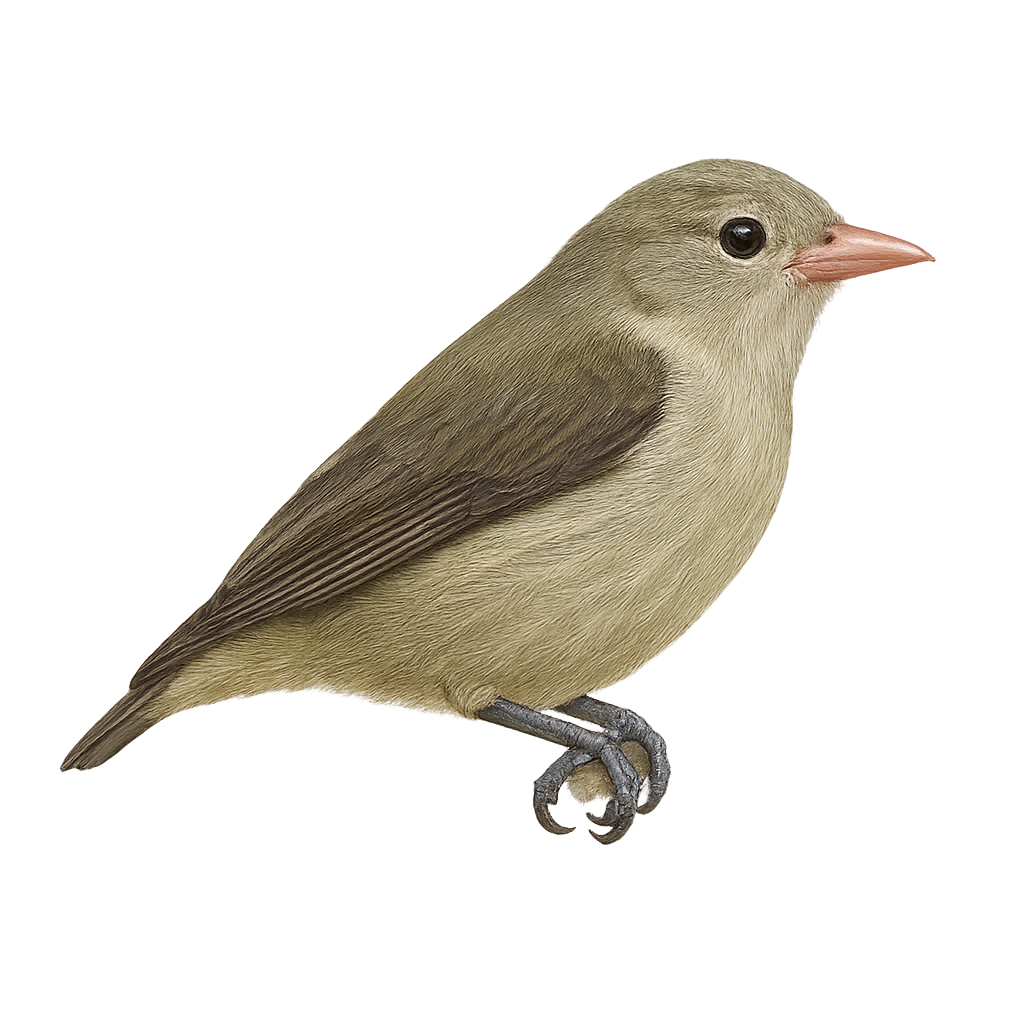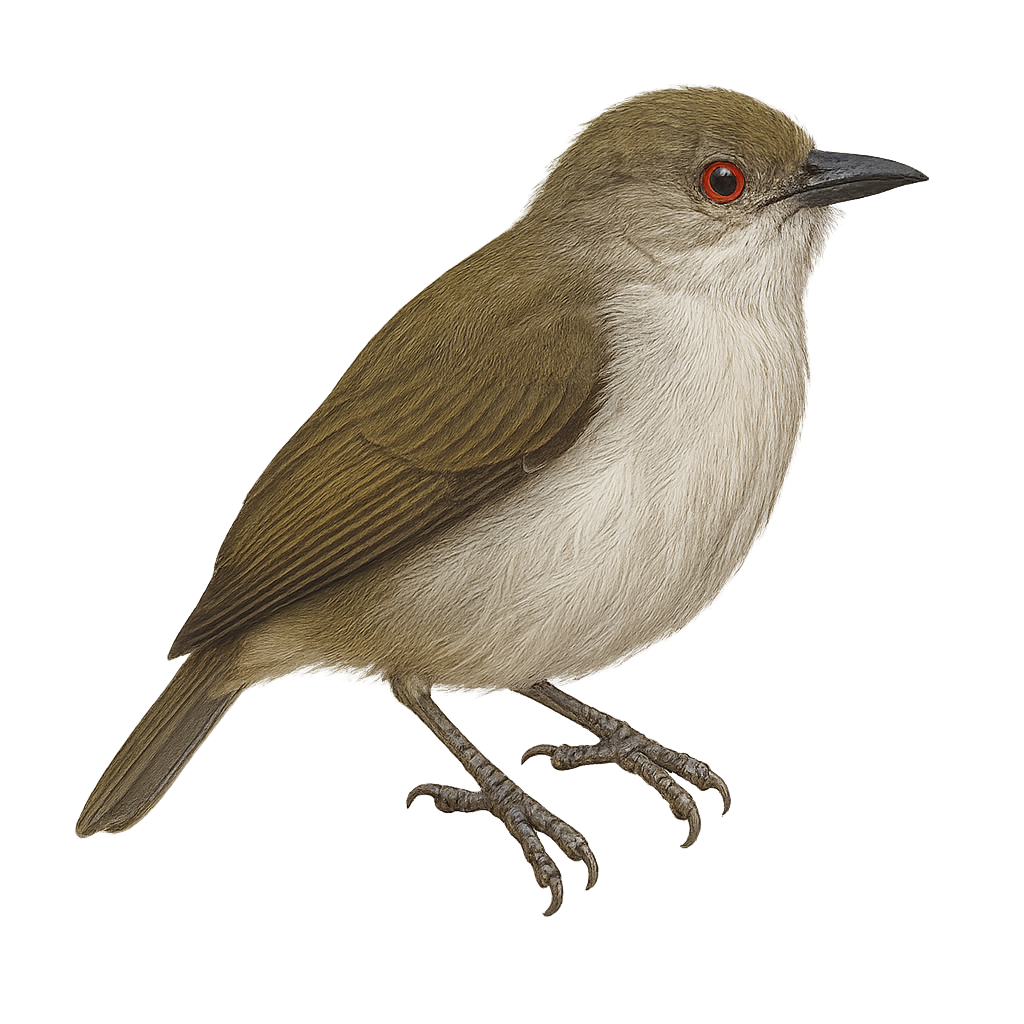The Cream-colored Courser, Cursorius cursor, is an elegant and swift terrestrial bird, primarily found in the arid and semi-arid regions of North Africa and the Middle East. Its slender silhouette, long legs, and light beige plumage with cream hues allow it to blend seamlessly into its desert surroundings. This bird is particularly adapted to desert life, feeding mainly on insects and small invertebrates. The Cream-colored Courser is known for its rapid running and ability to cover long distances in search of food. It typically nests on the ground in open areas, with its eggs well camouflaged among stones and sand.
The Madagascar Pond-Heron, Ardeola idae, is a medium-sized bird belonging to the Ardeidae family. It is primarily found in the wetlands of Madagascar, but also in some regions of East Africa. This bird is notable for its striking white breeding plumage, contrasting with its duller, brownish non-breeding plumage. It has a yellow bill and greenish legs. The Madagascar Pond-Heron feeds mainly on small fish, insects, and crustaceans, which it catches in shallow waters. It is often solitary or in small groups and typically breeds during the rainy season, building its nest in trees or shrubs near water.
The Squacco Heron is a small heron, easily recognizable by its head adorned with long white feathers that form a sort of mane, which gives it its name. Its plumage is primarily beige and white, with brown or gray shades on the wings and back, and a short, thick beak. This heron measures about 45 cm in length, with a wingspan of approximately 80 cm. It is often observed in wetland areas such as marshes, riverbanks, and ponds, where it primarily hunts small fish, aquatic insects, and crustaceans.
The Squacco Heron is a migratory bird found primarily in the Mediterranean regions, but its population is declining due to habitat loss and water pollution. Although it is a rather discreet and solitary bird, it can sometimes be seen in small groups during the breeding season. This heron has a characteristic hunting behavior, walking slowly in shallow water where it probes the ground with its beak.
The Chinese Pond Heron, Ardeola bacchus, is a small heron with distinctive plumage. During the breeding season, it displays vibrant colors with a reddish-brown head and neck, metallic green back, and white wings. Outside this period, it appears duller with brownish hues. Found mainly in Southeast Asia's wetlands, it inhabits rice fields, marshes, and lake edges, feeding on fish, insects, and small crustaceans. Its flight is swift and direct, often at low altitudes.
The Scaly Babbler, or Turdoides squamulatus, is a medium-sized bird known for its brownish plumage with distinctive scaly patterns on the chest and back. Often seen in noisy groups, they move through the underbrush and savannas of sub-Saharan Africa. These birds are known for their complex social behavior and varied vocalizations. They primarily feed on insects, small invertebrates, and occasionally fruits. Their preferred habitat includes shrublands and open forests. Although they are quite widespread, observing them may require patience due to their wary nature and habit of hiding in dense vegetation.
The Red-billed Chough, or Pyrrhocorax pyrrhocorax, is a member of the Corvidae family, easily identified by its glossy black plumage and bright red bill. It is commonly found in mountainous and coastal regions, feeding mainly on insects and small invertebrates. Known for its impressive aerial acrobatics and distinctive calls, this bird typically nests on cliffs or in abandoned buildings, forming noisy colonies. Although its range is extensive, it is locally threatened by habitat loss and human disturbances. Its presence often indicates the health of mountainous ecosystems.
The American Kestrel, or Falco sparverius, is the smallest falcon in North America. It is known for its colorful plumage, featuring shades of rufous, blue-gray, and black. Males have blue wings and a spotted chest, while females display more uniform tones. This raptor is famous for its ability to hover in place, scanning the ground for prey. It primarily feeds on small mammals, insects, and occasionally small birds. Adaptable, it inhabits various environments, from open fields to urban areas. Its presence is often marked by its sharp, piercing call.
The Black-backed Puffback, or Dryoscopus cubla, is a medium-sized bird belonging to the Malaconotidae family. It is primarily found in wooded areas and savannas of sub-Saharan Africa. This bird is distinguished by its black and white plumage, with a black back and white belly, hence its name. Males and females show slight sexual dimorphism, with males having brighter colors. Known for its melodious and varied song, it is often heard before being seen. The Black-backed Puffback is a territorial bird, usually living in pairs or small family groups. It primarily feeds on insects but can also consume fruits and seeds.
The Yellow-bellied Shrike, or Dryoscopus gambensis, is a medium-sized bird known for its distinctive plumage. It features a dark gray back, white belly, and black wings with shiny highlights. This bird is often found in the savannas and open forests of sub-Saharan Africa. It primarily feeds on insects, which it skillfully captures with its robust beak. The Yellow-bellied Shrike is a territorial bird, often seen alone or in pairs. Its song is melodious and varied, making it easily identifiable for birdwatchers. Although generally discreet, it may become more visible during the breeding season.
The Black-necked Swan, Cygnus melancoryphus, is a graceful waterbird native to South America. It is easily recognized by its pure white plumage contrasted with a black neck and a striking red knob at the base of its bill. Preferring freshwater lakes, lagoons, and marshes, it primarily feeds on aquatic plants. Known for its elegance, it swims gracefully and often forms monogamous pairs that share parental duties. While generally tolerant of humans, it can become wary if threatened. Its population is stable, but it remains vulnerable to environmental changes.
The Whooper Swan, also known by the scientific name Cygnus cygnus, is a large species of swan that can reach a wingspan of 2 to 2.5 meters, making it one of the largest swans in Europe and Asia. Its plumage is entirely white, except for the bright orange skin covering its bill. The Whooper Swan is primarily a migratory bird that lives in wetlands, lakes, and marshes. It feeds mainly on aquatic plants, but can also consume seeds and roots. During the breeding season, the Whooper Swan prefers freshwater lakes and ponds, where it builds floating nests. The migration of the Whooper Swan is particularly notable, as it travels long distances between its breeding grounds in Northern Europe and its wintering areas in Western Europe, Central Asia, and China. While its status is currently stable, the Whooper Swan can be threatened by habitat loss due to the draining of wetlands and water pollution. It is also vulnerable to illegal hunting and human disturbances.
The black swan, Cygnus atratus, is a large waterbird native to Australia, easily identifiable by its black plumage and bright red bill. Measuring up to 1.4 meters in length with a wingspan reaching 2 meters, it is one of the largest swans. Black swans primarily inhabit lakes, rivers, and marshes, feeding on aquatic plants. They are known for their social behavior and often form groups. Nesting usually occurs on isolated islands or shores. Although mostly sedentary, some may migrate depending on climatic conditions.
The Tundra Swan, Cygnus columbianus, is a medium-sized waterfowl belonging to the Anatidae family. It is recognizable by its pure white plumage and black bill with a yellow spot at the base. This swan is known for its melodious call, which gives it its name. It primarily inhabits wetlands and lakes in Arctic and subarctic regions during the breeding season, then migrates to more temperate areas in winter. The Tundra Swan is a gregarious bird, often seen in large flocks. Its diet mainly consists of aquatic plants, which it uproots by dipping its long neck underwater.
The Trumpeter Swan, Cygnus buccinator, is the largest swan in North America, renowned for its pure white plumage and long, elegant neck. It is distinguished by its black bill and dark eyes. Its powerful, resonant call, reminiscent of a trumpet, gives it its name. This majestic swan frequents lakes, marshes, and rivers, feeding primarily on aquatic plants. It is often seen in small family groups. Although its population was once threatened by hunting and habitat loss, conservation efforts have led to an increase in numbers. The Trumpeter Swan is a symbol of beauty and grace in aquatic ecosystems.
The mute swan is a large waterbird found in lakes, rivers, and ponds across Europe and Asia. It is easily recognized by its bright white plumage, long graceful neck, and the black knob on its beak. This bird is known for its majestic flight and territorial behavior, especially when protecting its territory or young. Mute swans primarily feed on aquatic vegetation but can also eat small invertebrates.
The Blue Dacnis is a small, colorful bird native to the tropical forests of South America. It is easily identified by its striking plumage: males have a bright blue head and back, while females display greener hues. This passerine measures about 12 cm in length and primarily feeds on fruits, nectar, and insects. It is often seen in small groups or pairs, actively moving through the canopy in search of food. Although its habitat is threatened by deforestation, the Blue Dacnis remains relatively common within its range.
The White-bellied Dacnis is a small, colorful bird belonging to the Thraupidae family. It is primarily found in the tropical rainforests of South America, particularly in Venezuela, Colombia, and Brazil. This passerine is distinguished by its striking plumage: males display a bright blue with a white belly, while females have more subdued shades of green and blue. The White-bellied Dacnis is a diurnal bird, active mainly during the day, feeding on fruits, nectar, and insects. It is often seen in small groups, sometimes in the company of other bird species. Although its habitat is threatened by deforestation, it is currently classified as "least concern" by the IUCN.
The Yellow-bellied Dacnis is a small, colorful bird belonging to the Thraupidae family. It is distinguished by its vibrant plumage, with a bright yellow belly contrasting with a blue-green back. Males and females exhibit sexual dimorphism, with males displaying more vivid colors. This bird is primarily frugivorous but also feeds on insects. It is found in the humid tropical forests of South America, particularly in Colombia, Peru, and Brazil. It is often seen in small groups, actively moving through the canopy in search of food. Although its habitat is threatened by deforestation, the Yellow-bellied Dacnis is currently classified as Least Concern by the IUCN.
The Blue Dacnis, or Dacnis cayana, is a small, colorful bird found in the tropical forests of South America. Males display vibrant blue plumage with black wings and tail, while females are a more subdued green. Measuring about 12 to 13 cm, this bird is often seen in pairs or small groups. It primarily feeds on fruits, nectar, and insects, playing a role in pollination and seed dispersal. The Blue Dacnis is a diurnal bird, most active in the morning and late afternoon. It is known for its melodious song and aerial acrobatics when feeding in the canopy.
The Cape Petrel, or Daption capense, is a medium-sized seabird known for its striking black and white plumage. It primarily inhabits the cold waters of the Southern Ocean, often seen gliding over the waves. Its short, hooked black beak is well-suited for its diet of crustaceans, small fish, and marine debris. The Cape Petrel is an adept swimmer, using its wings to propel itself underwater. It nests in colonies on subantarctic islands, digging burrows in soft soil to lay a single egg. Although its habitat is remote from human activities, it faces threats from climate change and marine pollution.
The black-bellied whistling duck is a whistling duck in the family Anatidae, 47–56 cm long, with a long neck, pink bill and grey-brown plumage. It inhabits shallow freshwater ponds, marshes and lakes, feeding on seeds, aquatic plants and small invertebrates. Gregarious and cavity-nesting, it breeds colonially in tree hollows or nest boxes.
The Plumed Whistling Duck is a medium-sized waterfowl, easily identified by its light brown plumage with darker feathers on the back and wings. It has a lighter head and neck, often with a pinkish hue, and a grey bill. Its legs are long and grey-blue. This duck is often seen in flocks, feeding on seeds and aquatic plants. It is primarily nocturnal, spending its days resting in shaded areas near water. Found mainly in Australia, it inhabits marshes, lakes, and rivers. Although generally tolerant of human presence, it can become wary if disturbed.
The Fulvous Whistling Duck is a medium-sized waterfowl, recognizable by its tawny-brown plumage and darker wings. It features a long neck and gray legs and is known for its distinctive whistling call. It is primarily found in wetlands, such as marshes and rice fields, where it feeds on seeds, aquatic plants, and insects. Social in nature, it often forms large flocks, especially outside the breeding season. Its geographical range includes tropical regions of America, Africa, and Asia. Although generally not very shy, it can be cautious in the presence of potential threats.
The Lesser Whistling Duck is a medium-sized waterfowl known for its reddish-brown plumage and distinctive whistling call. It primarily inhabits wetlands in South and Southeast Asia, including marshes, rice paddies, and shallow lakes. This gregarious bird is often seen in large flocks, especially outside the breeding season. It feeds mainly on seeds, aquatic plants, and insects. The Lesser Whistling Duck is an excellent swimmer and diver, although it also spends considerable time walking on land. Its ability to adapt to various aquatic habitats makes it a resilient species, although habitat destruction poses a potential threat.
The Eudromia formosa, or elegant crested tinamou, is a terrestrial bird native to the arid and semi-arid regions of Argentina. It is easily recognizable by its distinctive crest and mottled brown-gray plumage, which allows it to blend into its environment. This bird measures about 40 cm in length and has strong legs adapted for fast running. Although capable of flight, it prefers to run to escape predators. The elegant tinamou primarily feeds on seeds, fruits, and insects. It is monogamous, and the male actively participates in egg incubation. Despite its discreet nature, it plays an important role in the ecosystem by dispersing seeds.
The White-faced Whistling Duck is a medium-sized waterfowl known for its distinctive plumage. Its white face contrasts with its dark brown body and long neck. Often seen in large flocks, it emits characteristic whistles. Native to sub-Saharan Africa and South America, it inhabits wetlands, lakes, and marshes. This duck is primarily nocturnal and crepuscular, feeding on seeds, aquatic plants, and insects. Although sociable, it can be wary of humans. Its population is stable, but it is sensitive to environmental changes and habitat degradation.
The Gouldian Finch, or Chloebia gouldiae, is a brightly colored bird native to Australia. This small passerine is renowned for its vivid plumage, featuring a mix of bright colors such as red, green, yellow, and blue. Males are generally more colorful than females, which is typical in many bird species. They primarily inhabit savannas and open grasslands, where they feed on seeds and insects. The Gouldian Finch is a social bird, often seen in small groups. However, it is considered vulnerable due to habitat loss and environmental pressures.
The Zebra Finch, or Taeniopygia guttata, is a small granivorous bird native to Australia. It is easily recognizable by its pearl gray plumage, bright orange cheeks, and vivid red beak. Males display distinctive patterns on their chest and flanks, while females are more subdued. This passerine measures about 10 to 12 cm in length and weighs between 12 and 15 grams. It is very sociable and lives in groups in the wild, preferring open areas such as savannas, grasslands, and farmlands. The Zebra Finch is also very popular as a pet bird due to its docile nature and ease of breeding.
The Tickell's Flowerpecker is a small passerine bird belonging to the Dicaeidae family. It is primarily found in the Indian subcontinent, inhabiting forests, gardens, and wooded areas. This bird is recognizable by its bright red bill, contrasting with its grey and white plumage. It feeds mainly on fruits, nectar, and occasionally insects. The Tickell's Flowerpecker is an active and agile bird, often seen hopping from branch to branch in search of food. Although it is quite common within its range, it is often difficult to spot due to its small size and discreet behavior.
The Anna's Flowerpecker is a small, colorful bird found primarily in the tropical and subtropical forests of Southeast Asia. This passerine is recognizable by its vibrant plumage, often adorned with shades of blue, green, and red. It primarily feeds on nectar, fruits, and insects, playing a crucial role in plant pollination. Its song is melodious and varied, making it easily identifiable for birdwatchers. Although generally solitary, it can sometimes be seen in small groups, especially during the breeding season.


